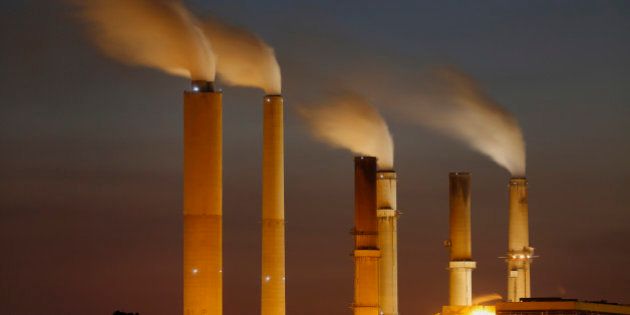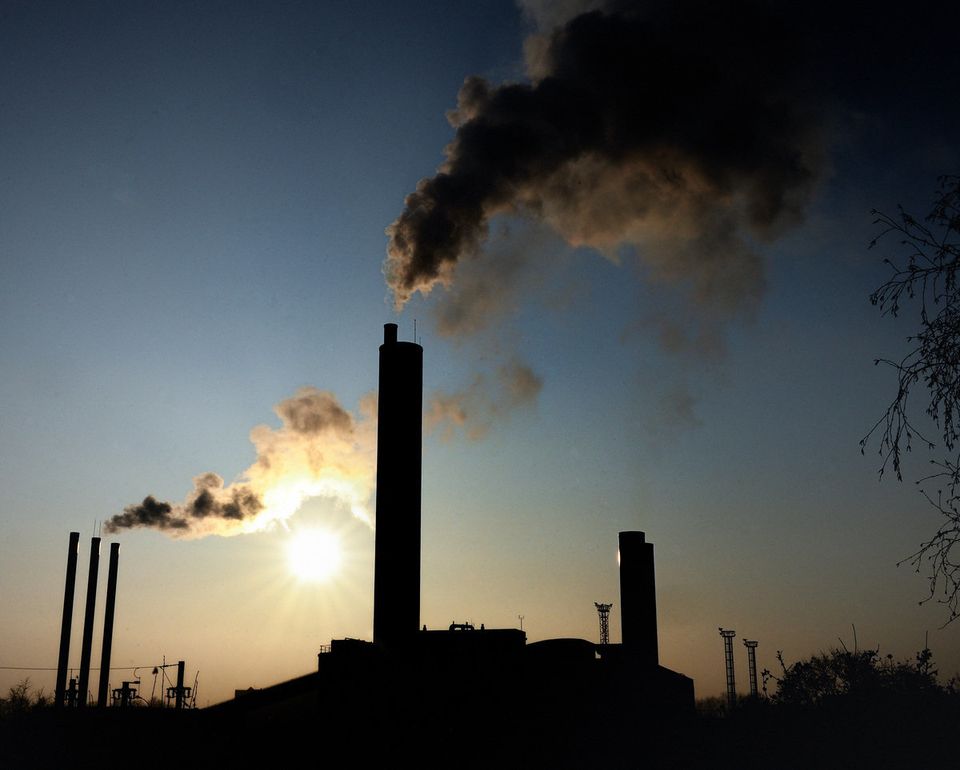
NEW DELHI/ TOKYO -- The global coal industry is trumpeting "cleaner coal" technology to fight bubbling competition from renewable energy, but the high costs of greener plants are proving a major obstacle in selling them to power-hungry countries such as India.
The challenges are highlighted by the experience of Japan - despite a concerted push by Tokyo to take a lead in exporting the technology, only 7 percent of the power stations built or planned since 2010 with funds from Tokyo's export credit agency were of the most energy-efficient type, according to data from a group of NGOs.
With world leaders due to meet in Paris from Monday to try to agree a deal to tackle climate change, the World Coal Association (WCA) is touting the use of very hot steam under extreme pressure to raise a power plant's efficiency, which it says can cut the greenhouse gases emitted from burning coal by up to 30 percent.
For companies such as Mitsubishi Hitachi Power Systems, a joint venture between Hitachi Ltd and Mitsubishi Heavy Industries Ltd, and the merged power business of General Electric and Alstom, Asia offers the best opportunities, as Europe and North America switch to cleaner sources of energy.
India should be one of the most promising markets - already the world's third-biggest consumer, it is ramping up domestic production as it plans to more than double coal output to an annual 1.5 billion tonnes by the end of this decade.
More efficient use of its coal, the dirtiest of fossil fuels, could help New Delhi address accusations the world's third biggest emitter of carbon dioxide is not doing enough to slow its greenhouse gas growth.
"Expanding efficient coal consumption will help address India's energy trilemma of meeting demand, reducing energy poverty and actively participating in climate change commitments," WCA CEO Benjamin Sporton said.
FOREIGN MONEY
India says foreign money and technology are crucial for the success of its climate change commitments, particularly as it is expected to almost triple its installed coal power capacity to 500 gigawatts by 2040.
There was a boost last week for exporters of high-end cleaner coal technology, when the OECD agreed to exempt the most energy efficient "ultra-supercritical" (USC) power plants from new restrictions on subsidies for exports.
That was a victory for Japan, whose Prime Minister Shinzo Abe has consistently touted cleaner coal technology as part of a push to triple infrastructure exports to about 30 trillion yen ($244 billion) by 2020 to help boost an anaemic economy.
Japan has been at the forefront of the development of the technology as it tries to manage the competing demands of cutting greenhouse gas emissions while burning coal at record levels after the Fukushima disaster shattered public confidence in the safety of nuclear power.
But Tokyo's push to sell USC power plants overseas has a long way to go.
Of 23 coal stations funded since 2003 by Japan Bank for International Cooperation, the biggest public financer of coal stations after China, only one used USC technology, according to a study by Japanese NGOs JACSES, Kiko Network and international groups including the Sierra Club.
Using more recent figures to account for the emergence of USC technology, only 7 percent of JBIC funded stations were of that type, the study said.
A JBIC official said the number of USC deals was expected to rise in coming years.
Hirosuke Tai, an analyst at Daiwa Securities in Tokyo, said Japanese companies would need to cut costs to make USC more competitive, but added their technological lead would be an advantage if higher global environmental standards were agreed.
"Tighter regulations may bring more opportunities for Japanese companies," he said.
CHEAPEST OPTION
USC plants can cost up to 40 percent more than conventional units, the WCA acknowledges, while many international lenders are turning their backs on financing new coal projects in favour of gas and renewable energy.
Slumping coal prices, which have fallen to multi-year lows as supply outpaces demand, are also eroding the cost benefits of more efficient plants.
And in emerging markets such as India, where many consumers regard cheap power as a right, producers still mostly go for the cheaper option.
GVK Power & Infrastructure Ltd, which is developing a 540 megawatt coal-based plant in northwestern Punjab state, chose to use older sub-critical technology for that reason, said Chief Financial Officer Issac George.
The company would consider more efficient technologies for future plants, but George said that it depended on whether life-cycle costs came down significantly given the higher upfront capital outlay.
"If the government would give some sort of subsidy to reduce the capital cost... That's how we can finance green technology," George said."
India's largest power producer, state-run NTPC, runs more than 90 percent of its 34,400 MW of coal capacity on sub-critical technology, but most of its newer plants will be built using more up-to-date systems, the company said.
Some firms, such as Tata Power and Adani Power Ltd, which runs one of India's largest coal plants, have installed mid-range super-critical generating units, but across India more than two-thirds of the power plants built since 2010 use sub-critical technology.
Asok Dasgupta, president of the Independent Power Producers Association of India, agreed more help was needed to push cleaner coal.
"Are you going to support the environmental guys or are you going to support power plants?" Dasgupta. "You will have to support both."



Contact HuffPost India
Also see on HuffPost:

